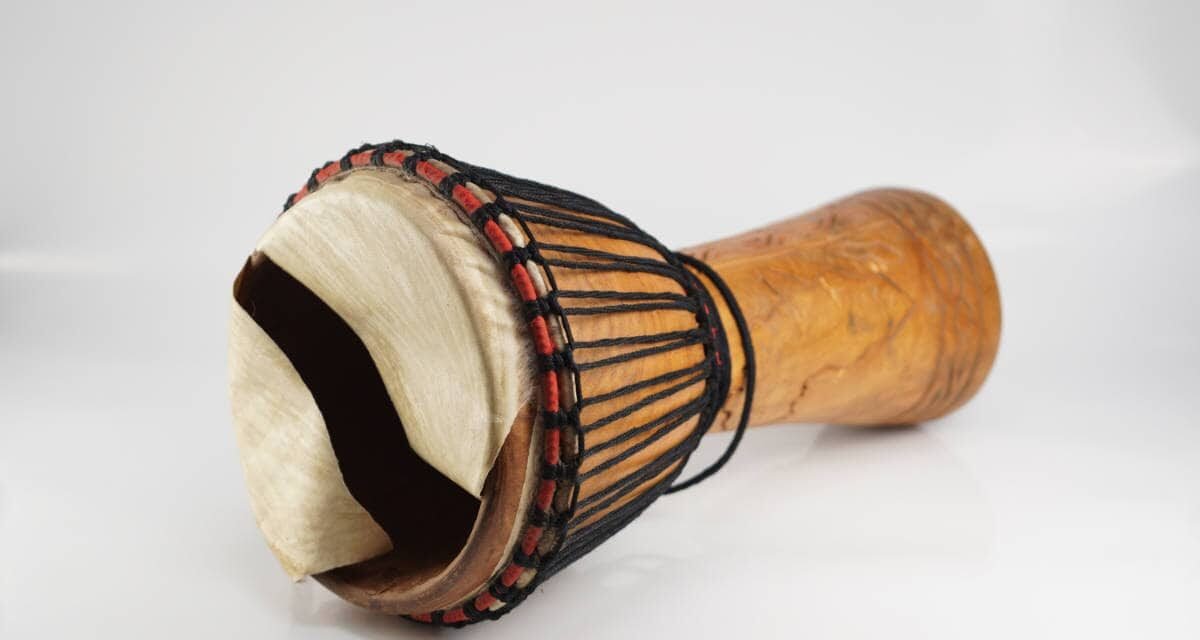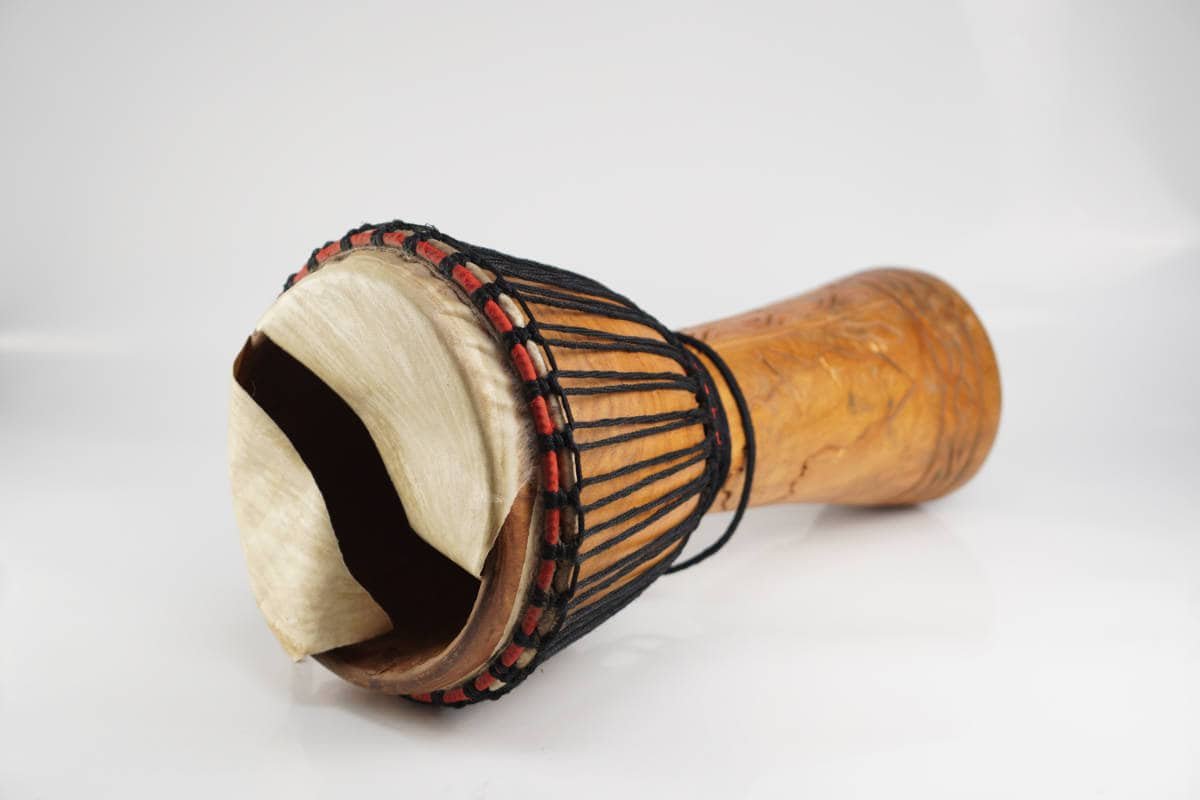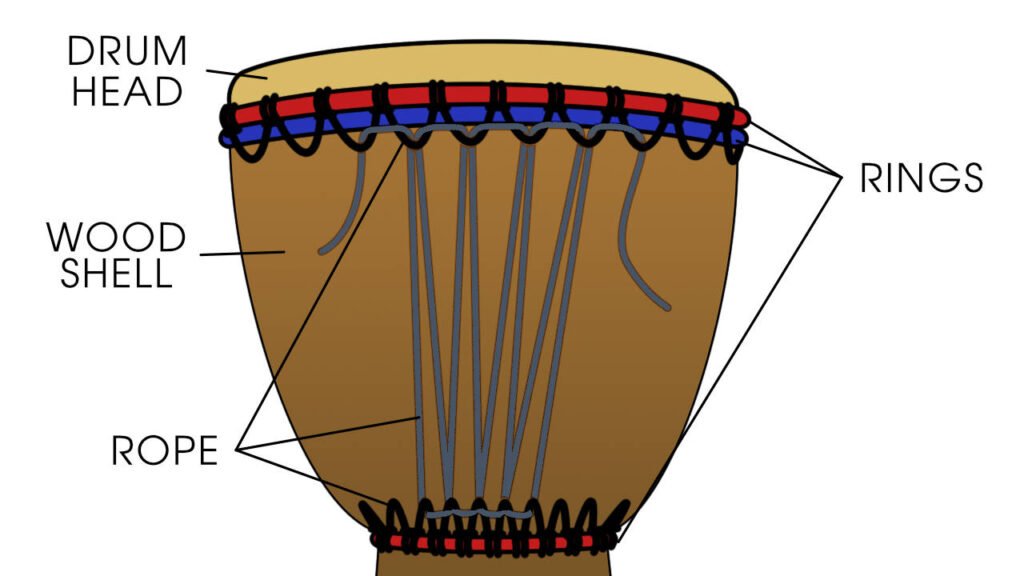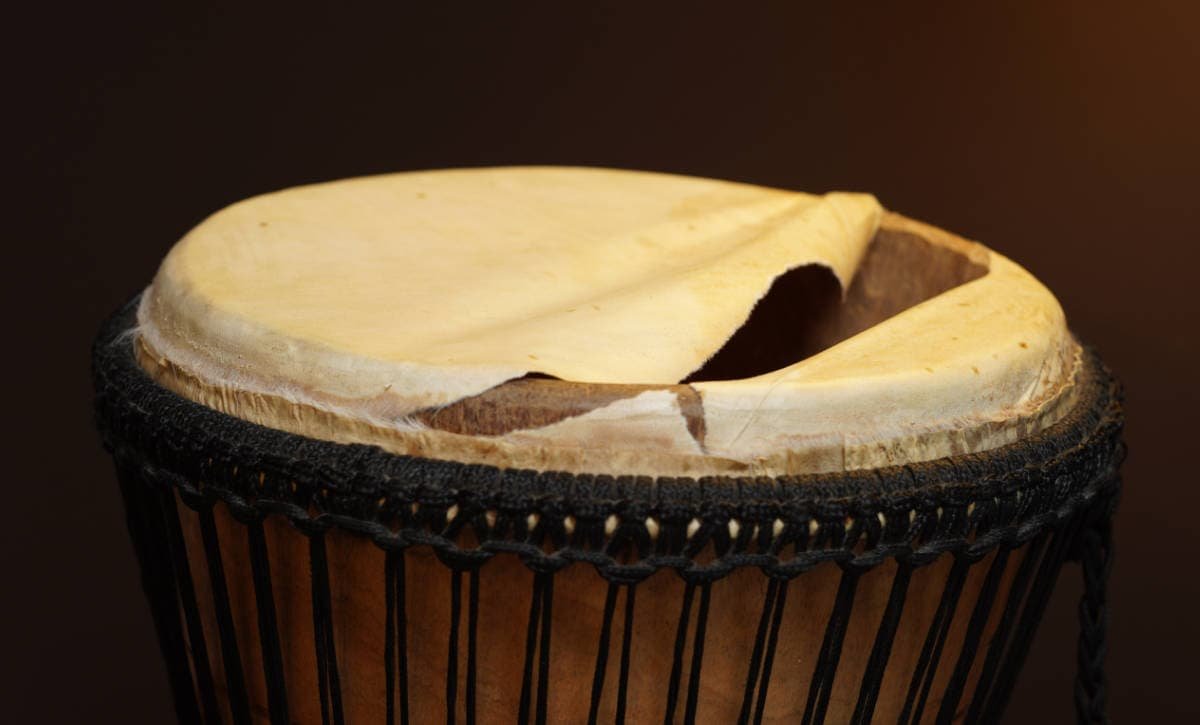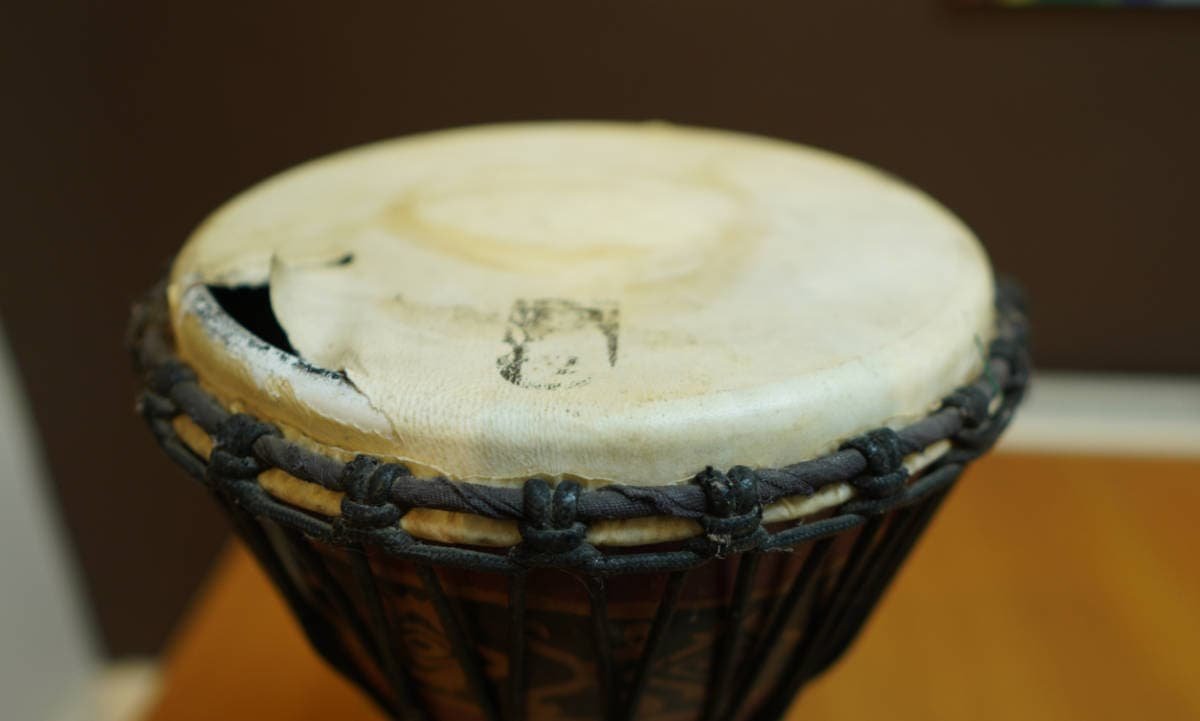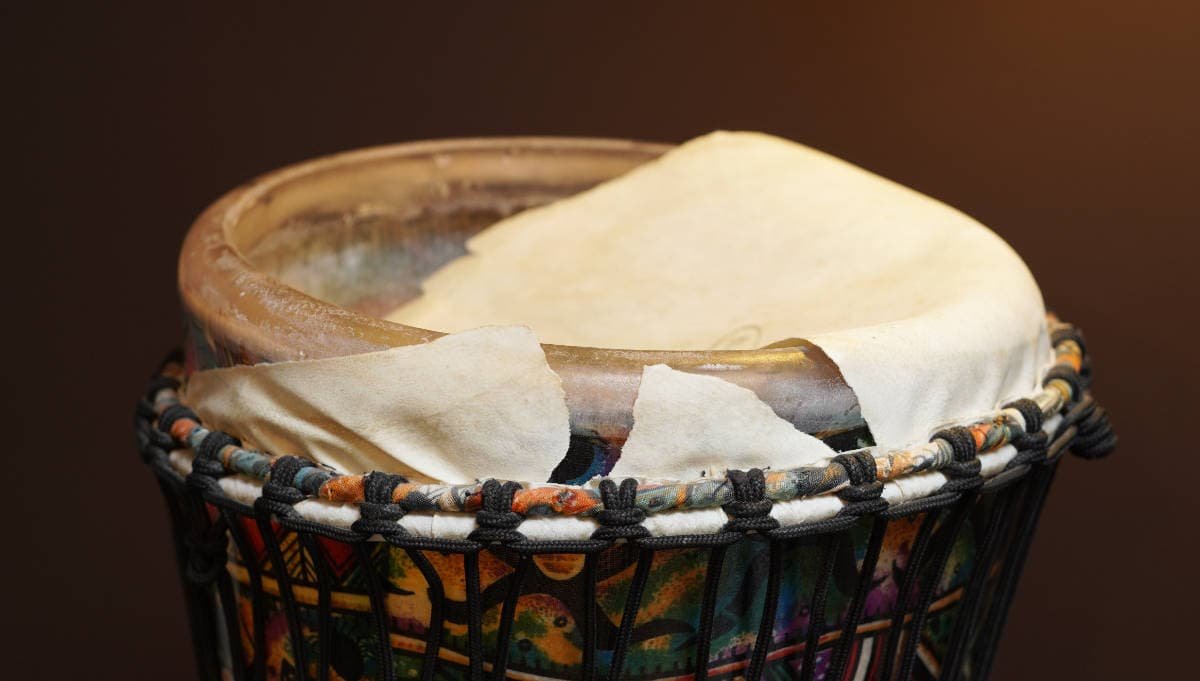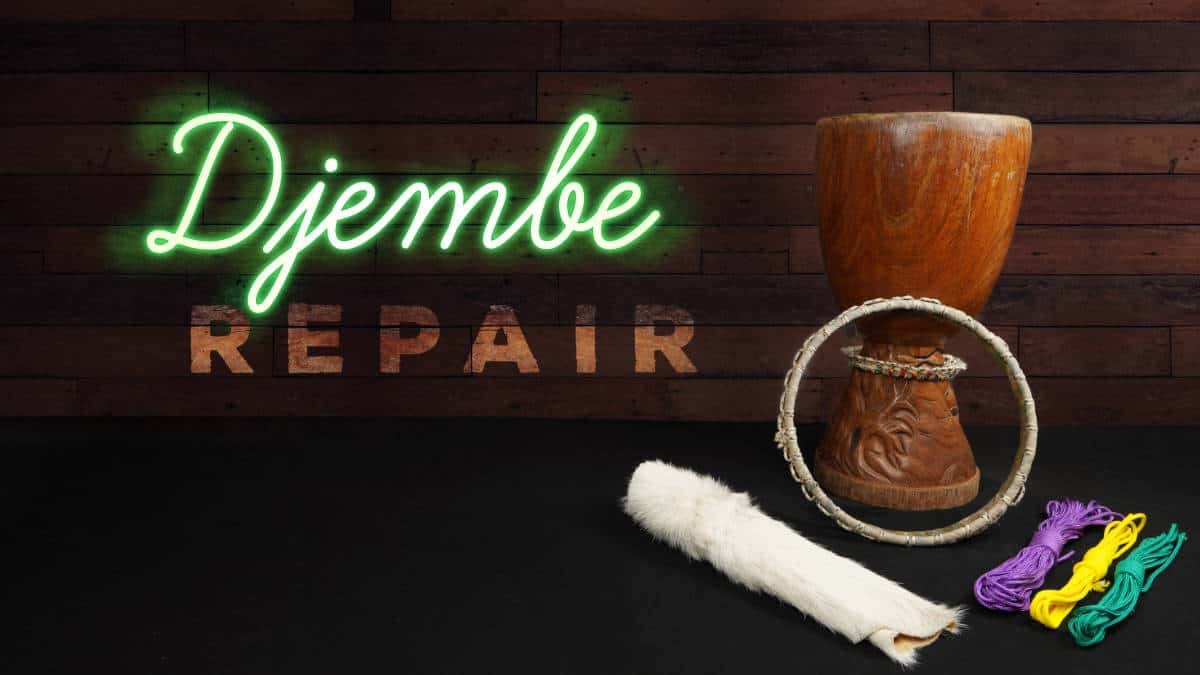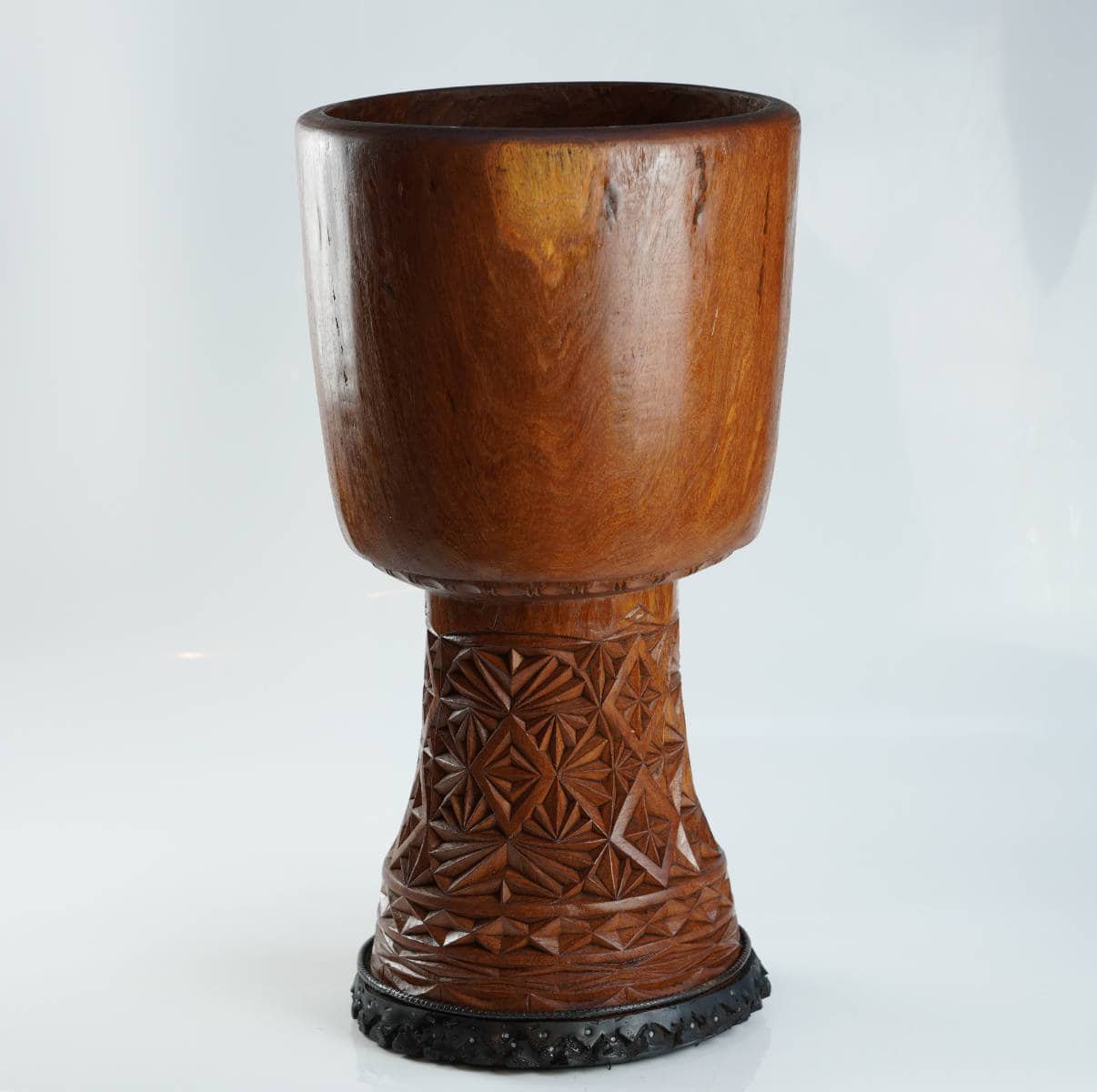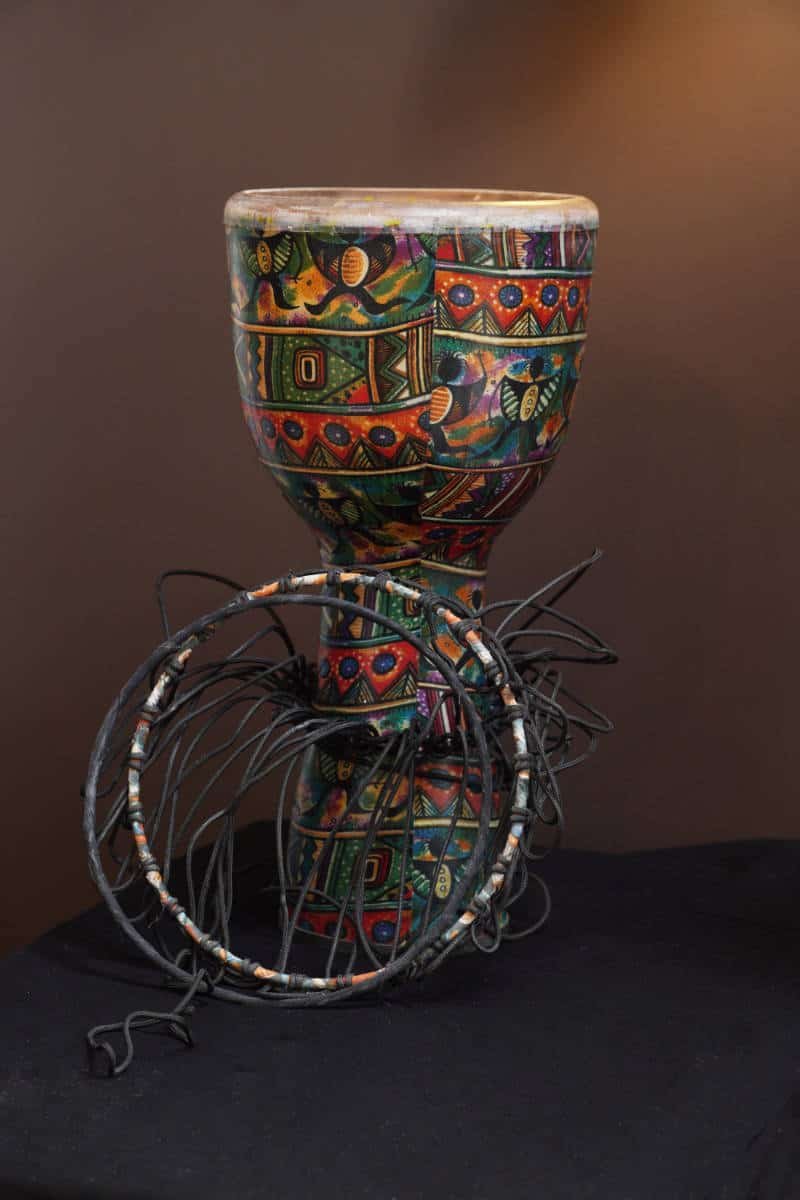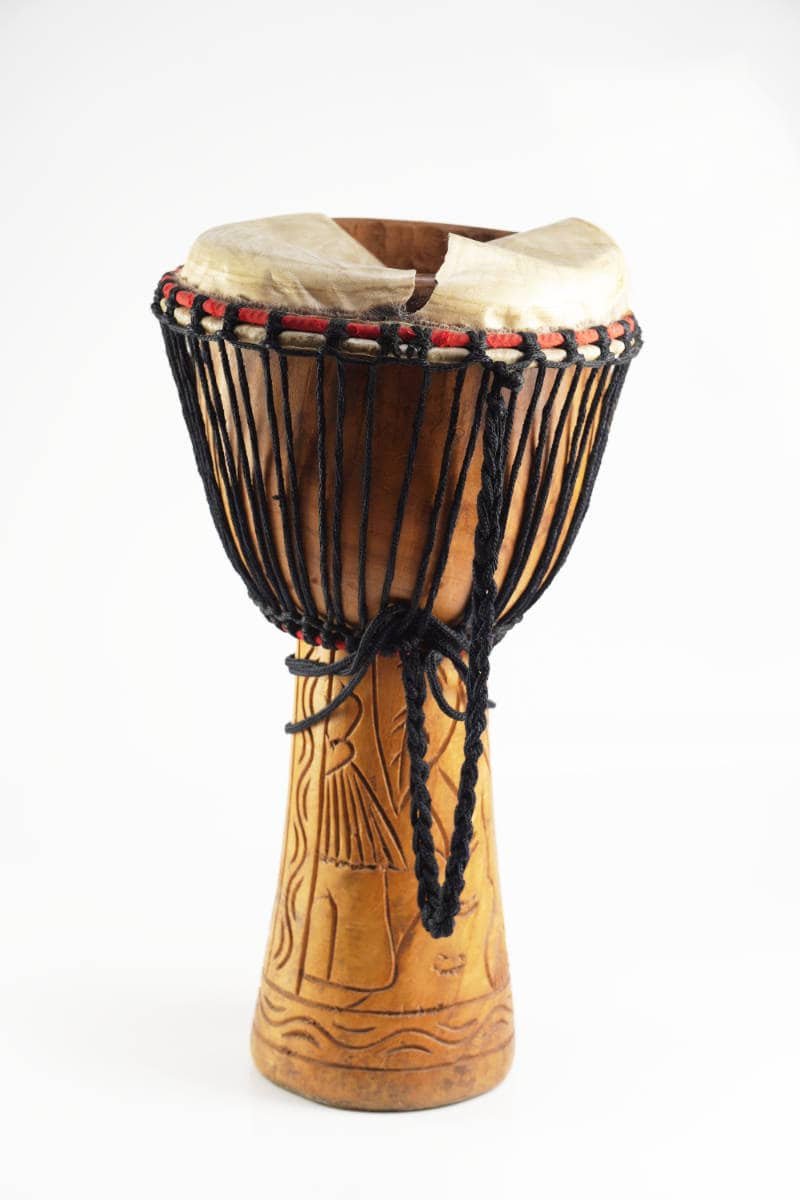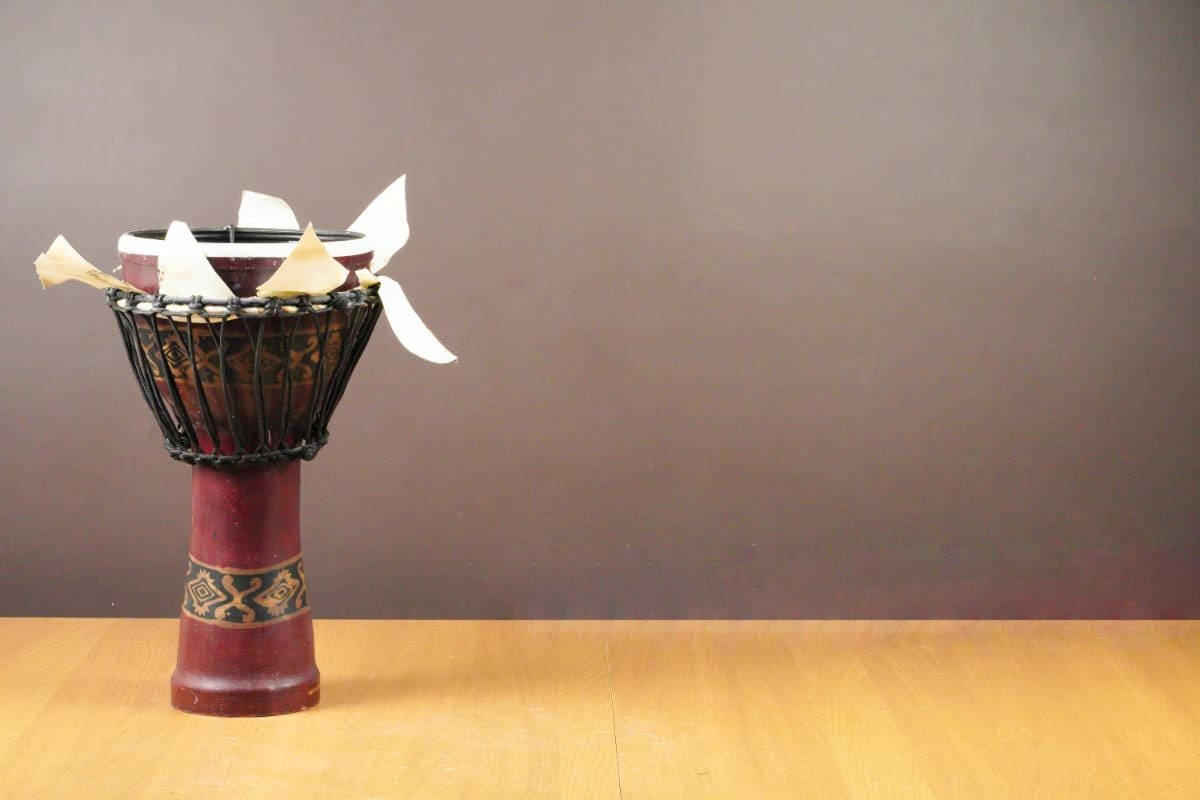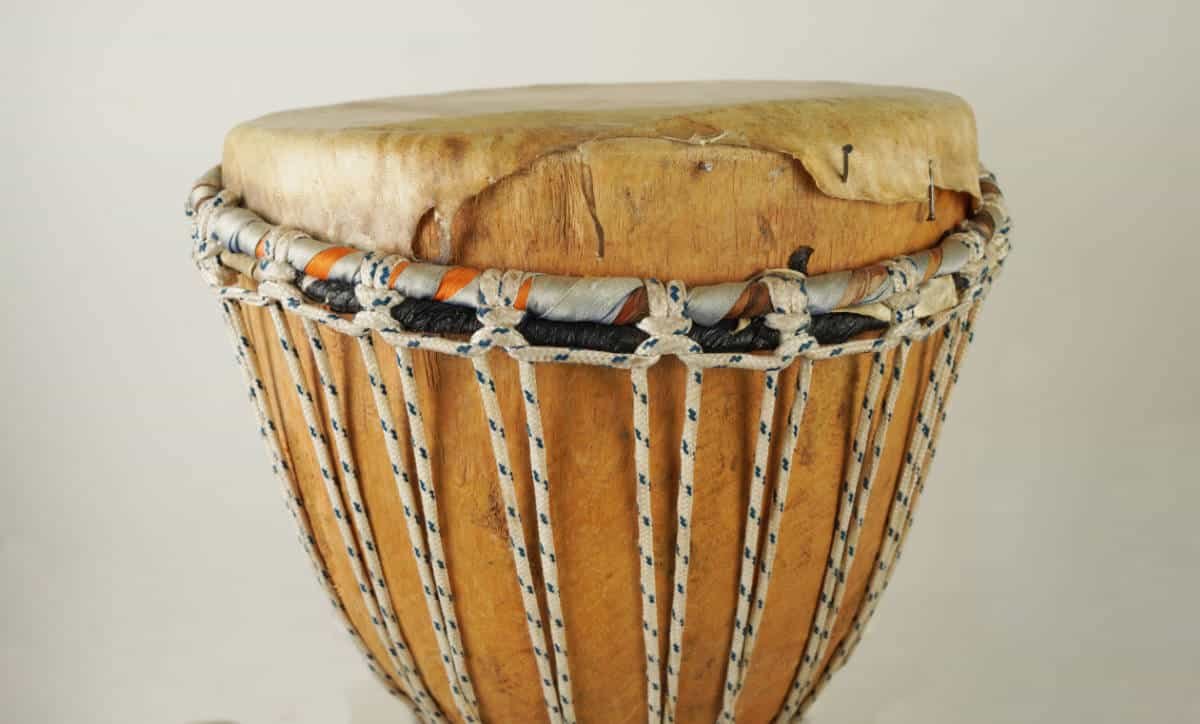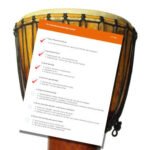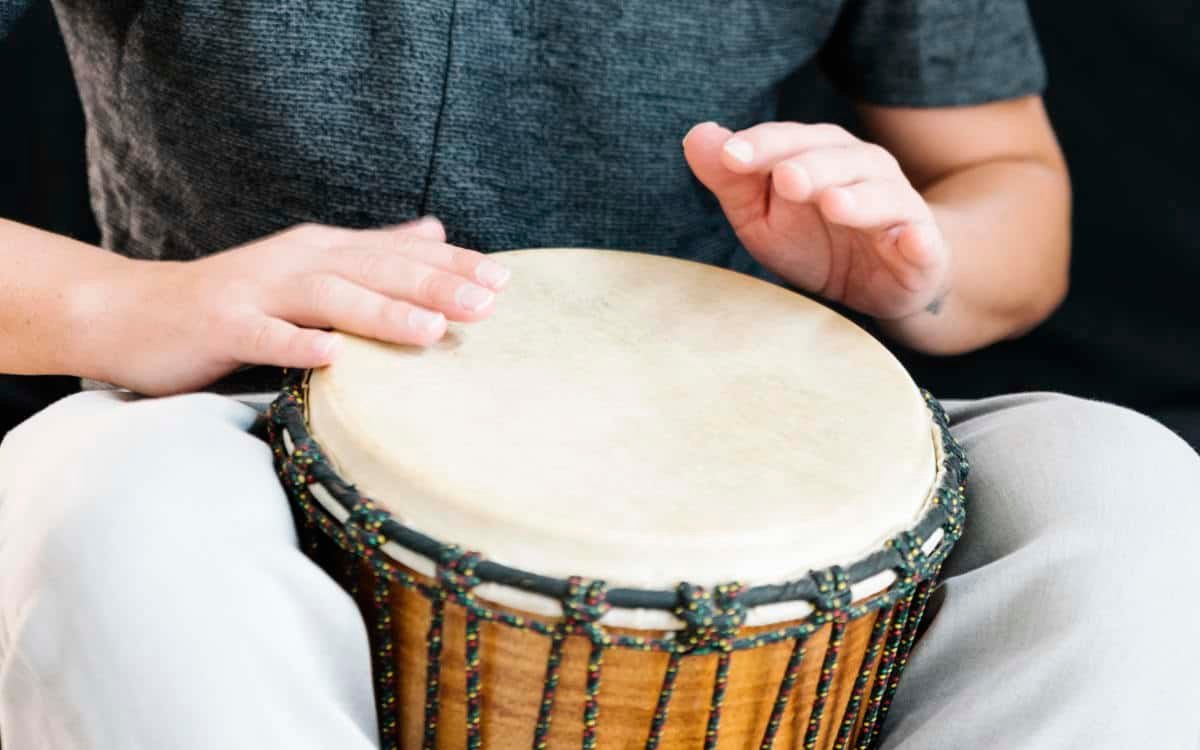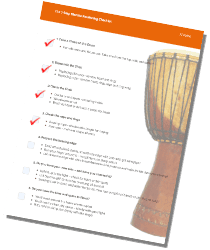If your djembe is cracked, dull-sounding, or has a torn drum head, you're not alone. Every drum wears down with time and use.
Whether it's from natural djembe wear and tear, poor storage, or enthusiastic playing, even the best African djembe drum may one day need restoration.
Here's what you need to know — and how we can help you bring your beloved djembe back to life.
🔧 Why Djembes Break (and Why That’s Okay)
Over time, your djembe can develop:
- Torn or stretched drum heads
- Loose or snapped ropes
- Cracked wood shells
- Flat, dull, or buzzing tone
That doesn’t mean your drum is done for. Most djembes can be repaired, restored, or rebuilt — often better than before.
🧠 Understand the Djembe's Anatomy
A quality djembe has:
- Wood shell – hardwood, often carved by hand
- Drum head – usually goat or cow skin
- Tensioning rings – 3 metal rings that grip the skin
- Ropes – polyester rope tuned by pulling diamonds
Each part contributes to the drum’s sound, strength, and personality.
Other problems are harder to spot. Over time, djembe drummers may notice certain changes in tone or feel:
These are all signs that your djembe needs a professional assessment. Just like a fine guitar or violin, a djembe benefits from expert care.
Can You Repair a Djembe Drum?
Yes — and many times, you can restore your drum to full playing power.
From minor tune-ups to full djembe restoration, we assess each drum individually. A personal drum deserves the right attention, and no two repairs are quite the same. Sometimes it’s a matter of tensioning ropes, other times we might fully rebuild cracked shells and replace worn-out rings.
Can You Do It Yourself?
Yes, you can — with patience, a bit of instruction and a few tools, it's not complicated.
But don't underestimate it - it can be tricky, and it’s easy to make costly mistakes. Incorrectly mounted skin can ruin tone or tear under tension. Loose ropes might slip. We’ve even seen drums damaged from improper tools.
That's why we have a complete video course on djembe repair.
Or if you prefer, our professional djembe repair service ensures the right skin is mounted on your instrument, correctly tensioned, and finished to last.
How Do You Find Someone to Fix It?
We serve the UK for djembe repair.
Our workshop has seen everything from minor fixes to total rebuilds — like Alan’s djembe, fully reconstructed after damage in transit, or Rob's djembe, brought back from severe cracking and tuning failure. We take pride in restoring these special instruments.
Drum Head: Typically goat skin or cow skin, stretched and mounted across the top.
Rope and Ring System: A series of steel rings and woven rope, which hold the head in place and create the tension needed for rich tone.
Every quality drum relies on these working in harmony. When one element fails, it can affect the entire sound and feel of the instrument.
How Long Does a Djembe Last?
A well-cared-for djembe drum can last decades. But natural use causes the skin to wear, ropes to stretch, and shells to age. Regular inspection and seasonal tuning are key to maintaining peak performance. A neglected djembe can degrade quickly — especially if exposed to damp or extreme temperatures.
Importance of the Drum Head
The djembe head is central to the instrument’s voice. Whether it's a special drum head for a medium-size djembe, or a custom-cut head for an Indian djembe, it's the first component we check during repair. A great drum with a poor head won’t sound right — and the right skin, mounted and tuned properly, transforms the instrument.
Common Issues with Djembe Drums
- Cracked or split drum shells
- Loose or degraded tuning ropes
- Torn, stretched, or brittle old skin
- Buzzing sounds due to uneven tension
- Dull tone or unresponsive bass/slap tones
Identifying Problems in Your Djembe
If your drum feels wrong — too loose, too quiet, too sharp — we can help diagnose the issue. Our team includes an experienced drum repair technician who knows how to spot subtle problems before they become serious.
Signs That Your Djembe Needs Repair
- Skin is torn or splitting at the edge of the skin
- Ropes won’t hold tuning tension
- You feel resistance or flex in the head when playing
- There’s no clarity when you strike the drum
- You’ve weathered the drum through travel or damp conditions
Understanding Djembe Wear and Tear
Even the good djembe eventually breaks down. That’s where expert djembe repair comes in — not just to fix, but to revive and refine.
Repairing Your Djembe Drum
Tools Needed for Djembe Repair
We use a variety of specialized tools: rope pullers, sharp blades, tensioning systems, ring clamps, and sanding equipment. Every djembe repair project is different — whether it’s a rough-hewn djembe from a village in Guinea or a polished artisan shell from Mali.
How Much Does It Cost to Reskin a Djembe?
Prices vary depending on size, condition, and the type of skin. Our standard reskinning service using fresh African goat skin starts at around £80. More involved restorations — including rope replacement, crack repair, or full ring sets — can range from £120 to £200+. For custom or performance-level work, prices are quoted case by case.
Step-by-Step Overview (Not a DIY Guide)
Here's an outline of the full process. For step by step instruction see our complete course:
- Remove the old skin and carefully disassemble the drum
- Inspect and clean the drum shell
- If needed, repair cracks or reshape the bearing edge
- Mount the new skin with precise alignment
- Tension and tune the ropes to achieve optimal pitch and feel
- Let the drum settle and dry before final tuning
Every step is carried out with attention to detail and respect for the drum’s origins.
Djembe Restoration Techniques
Our total djembe restoration service may include:
- Resurfacing or reshaping the bearing edge
- Replacing metal rings with custom-fitted ones
- Full re-roping using pre-stretched polyester rope
- Installing a fresh djembe drum head suited to your playing style
- Crack sealing, sanding, and natural oil finishing
Types of Drum Heads for Djembe Restoration
- Goat skin: Crisp, responsive, traditional
- Cow skin: Rich in bass, more durable but harder to tune
- Synthetic: Very rare in traditional djembe use, but suitable for some modern or hybrid drums
We help you choose the right head for your needs.
Professional vs. DIY Djembe Restoration
A drum maker understands grain, tension, and tone. That’s what sets professional djembe repair apart from a quick YouTube fix. When we work on your drum, we bring decades of combined experience and the right materials to the bench.
Maintaining Your Djembe
Routine Care for Your Djembe Drum
- Store away from damp, heat, or direct sunlight
- Don't play with sticks, or while wearing rings.
- Loosen tuning ropes slightly if storing for a long time
- Check for rope wear, skin thinning, or ring movement
How to Extend the Life of Your Djembe
- Use a padded case during transport
- Avoid sudden temperature changes
- Oil the wood shell every few months with natural wood oil
Storage Tips for Your Djembe Drum
Keep your djembe in a dry, temperate place. If you’ve just had it re-headed with a drum with new skin, avoid heavy playing until the skin is fully dry and stable — usually around two weeks, depending on climatedrum with new skin, avoid heavy playing until the skin is fully dry and stable — usually around two weeks, depending on climate.
Where to Get Help with Djembe Repair
We offer full djembe repair services for customers across the UK and internationally. From quick reskins to full rebuilds — we’re ready to help.
Choosing a Professional Djembe Repair Service
Trust matters. We’ve worked on some of the finest drum shells we've ever seen, and every repair has taken place with care and respect. You’ll receive detailed communication, transparent pricing, and photos of your drum’s journey through our workshop.
Online Resources for Djembe Repair
Stay tuned to our website and subscribe to our mailing list for free expert guides, repair videos, and behind-the-scenes updates. We’ll also be launching our djembe repair course, which will take you step-by-step through the art of reskinning, tuning, and maintaining your own drum.
Community Support for Djembe Enthusiasts
Join our online group of djembe repair experts, djembe sales, and drumming fans. Whether you want to reassemble the djembe, learn to tension the skin, or explore how djembe drumming provides community and joy, we’re here.
Send us your drum, or get in touch to talk through what your djembe needs. We'll help you give the drum new life — and keep its voice strong for years to come.

